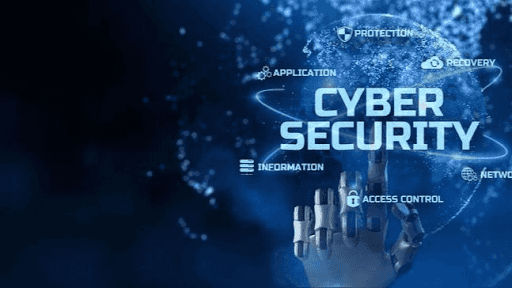How to Build a Cybersecurity Business and Scale It to a 7-Figure Company
The world is becoming increasingly digital, and with it, cybersecurity has transformed from a niche service into a booming, essential industry. Every business, from startups to Fortune 500 companies, is grappling with cyber threats that can compromise data, revenue, and reputation. This growing demand has created a massive opportunity for entrepreneurs: building a cybersecurity business.
In Deloitte’s research on financial institutions, infrastructure: “Respondents spent about 10.9% of their IT budget on cybersecurity on average, up from 10.1% a year earlier”.
If you’re looking to build a cybersecurity business that stands out, scales effectively, and dominates the market, you’re in the right place. This guide will walk you through actionable strategies, growth hacks, and key insights to take your cybersecurity venture from an idea to a seven-figure powerhouse.
Understanding the Dynamics of the Cybersecurity Market
According to a report by Mordor Intelligence, the cybersecurity market size is projected to reach US$423.43 billion by 2030, at a CAGR of ~12.45 %. Businesses across sectors, finance, healthcare, government, and e-commerce, are investing heavily in security solutions, opening the door for new vendors and service providers.
However, the market is competitive. To grow a cybersecurity company, you need a deep understanding of your target audience, their pain points, and the solutions that can truly make a difference. Differentiation is key. Whether you focus on network security, threat intelligence, incident response, or cloud security, your value proposition must be clear and compelling.
Step 1: Define Your Niche
One of the first steps when you build a cybersecurity business is to identify your niche. Trying to offer every security service under the sun can dilute your focus and resources. Instead, specialize in a segment where your expertise and resources provide the most value.
For example:
SMB Cybersecurity Services: Many small and medium businesses lack in-house security teams and are willing to invest in managed services.
Cloud Security: With cloud adoption accelerating, companies need guidance to secure cloud infrastructure.
Threat Intelligence and Analytics: Offering real-time AI threat detection and actionable insights can attract high-value clients.
By narrowing your focus, you position yourself as a go-to expert and build credibility faster, crucial for cybersecurity business growth.
Step 2: Build a Strong Foundation
A strong foundation is non-negotiable for any cybersecurity venture. This includes:
- Technical Expertise: Hire or partner with skilled cybersecurity professionals who understand the latest threats, tools, and compliance requirements.
- Robust Service Offerings: Design solutions that deliver measurable impact, reduced breaches, improved compliance, or cost savings.
- Legal and Compliance Framework: Ensure your business adheres to cybersecurity regulations like GDPR, HIPAA, and CCPA.
When you scale a cybersecurity firm, having these fundamentals in place ensures that you can handle growth without compromising quality.
Step 3: Develop a Customer-Centric Approach
Clients are at the heart of any successful business. To grow a cybersecurity company's revenue, focus on solving real problems for your customers.
- Understand Their Pain Points: Every client has unique challenges, network vulnerabilities, compliance gaps, or employee cybersecurity awareness.
- Offer Tailored Solutions: Avoid a one-size-fits-all approach. Personalized services enhance satisfaction and retention.
- Educate Your Clients: Run webinars, share insights, and demonstrate thought leadership. Clients are more likely to trust vendors who educate them.
Customer-centricity not only drives growth but also strengthens your reputation, leading to referrals and long-term contracts.
Step 4: Invest in Marketing and Brand Authority
Cybersecurity is a trust-based industry. To scale a cybersecurity business, building a strong brand is essential.
- Content Marketing: Share case studies, blog posts, and whitepapers addressing real cybersecurity challenges. Use your insights to position yourself as an industry thought leader.
- Social Proof: Highlight testimonials, client success stories, and cybersecurity partnerships to build credibility.
- Targeted Advertising: Use LinkedIn, Google Ads, and cybersecurity forums to reach decision-makers in IT and security roles.
Effective marketing ensures that your company doesn’t just exist but becomes visible to high-value prospects actively seeking solutions.
Step 5: Leverage Technology and Automation
Scaling a cybersecurity company isn’t just about hiring more staff; it’s about working smarter. Implementing automation tools and AI-driven platforms can help:
- Streamline Threat Detection: Automate repetitive tasks like log analysis and alert prioritization.
- Enhance Service Delivery: Tools for remote monitoring, vulnerability scanning, and incident response increase efficiency.
- Support Growth Without Adding Overhead: Automation allows your team to manage more clients without proportional increases in headcount.
Investing in technology early on is a key differentiator for businesses looking to grow cybersecurity company revenue sustainably.
Step 6: Develop a Scalable Sales Strategy
Sales is the engine that drives revenue. A structured, repeatable sales strategy is critical if you want to scale a cybersecurity business:
- Identify Ideal Clients: Focus on high-value sectors like finance, healthcare, and e-commerce.
- Build a Consultative Sales Team: Cybersecurity solutions are complex. Your sales team should educate and guide prospects rather than just push products.
- Use Account-Based Marketing (ABM): Target specific organizations with personalized outreach to increase conversion rates.
By aligning sales efforts with your niche and marketing initiatives, you create a pipeline that supports consistent revenue growth.
Step 7: Retention and Expansion Strategies
Acquiring clients is important, but retaining and expanding accounts is where true cybersecurity vendor growth tips shine:
- Regular Security Assessments: Provide ongoing monitoring and quarterly reviews to show value.
- Upsell and Cross-Sell Services: Introduce complementary services based on client needs.
- Build a Partnership Ecosystem: Collaborate with technology vendors and MSPs to expand your offerings and reach.
Happy clients become advocates, creating a multiplier effect that fuels cybersecurity business growth.
Step 8: Build a High-Performance Team and Culture
- Scaling a business requires people who can deliver results consistently:
- Hire Skilled Professionals: Security engineers, analysts, and sales experts are your growth drivers.
- Foster Continuous Learning: Encourage certifications, training, and attending conferences to stay ahead of evolving threats.
- Cultivate a Results-Oriented Culture: Align team incentives with company growth objectives.
A motivated, skilled team is indispensable when you aim to scale cybersecurity business revenue to seven figures.
Step 9: Monitor Metrics and Optimize Operations
- Data-driven decision-making is essential for growth. Key metrics include:
- Customer acquisition cost (CAC)
- Client retention rate
- Average revenue per client
- Service delivery efficiency
Regularly analyze these KPIs to optimize processes, adjust pricing, and identify opportunities to grow cybersecurity company profitability.
Step 10: Plan for Long-Term Growth
- Finally, sustainable success requires long-term vision:
- Expand service offerings to adjacent markets
- Explore international expansion in high-demand regions.
- Consider partnerships, mergers, or acquisitions for accelerated growth
With consistent execution and strategic foresight, it’s entirely possible to build a cybersecurity business that scales to a seven-figure revenue milestone and beyond.
Conclusion
Building and scaling a cybersecurity company is no small feat, but with the right approach, it’s achievable. From defining your niche and creating a customer-centric model to leveraging automation, marketing, and a high-performing team, every step contributes to long-term success.
Ready to Grow?
If you’re looking to take your cybersecurity business to the next level, connect with the right decision-makers through Execweb. We help cybersecurity vendors build real relationships with CISOs, so you can grow smarter, faster, and stronger.









Comment